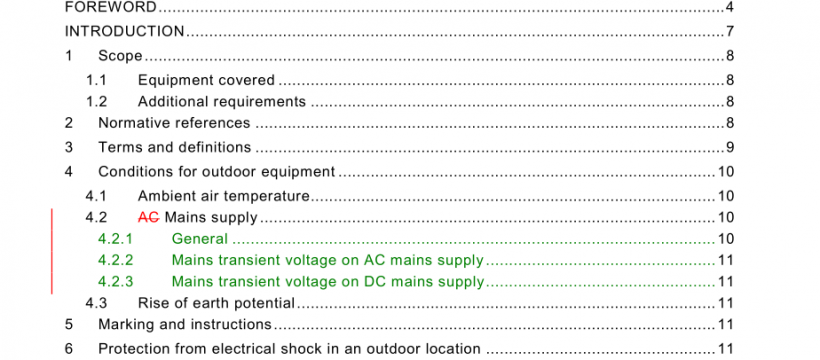IEC 60950-22:2016 pdf free download
IEC 60950-22:2016 pdf free download.Information technology equipment – Safety
This test is applicable to gaskets with closed cell construction. The set of specimens of gasket material shall be tested to the requirements of a), b) and c) (see Figure D.1). On completion of each test, the specimens shall not show signs of deterioration or cracks that can be seen with normal or corrected vision.
a) A cylindrical weight sufficient to apply 69 kPa shall be placed on the middle portion of each specimen for a period of 2 h. At the end of that time the weight shall be removed and the specimen allowed to rest at a room temperature of 25 ° C ± 3 ° C for 30 min. The thickness of the gasket shall then be determined and compared with a measurement obtained before the application of the weight. The compression set shall not exceed 50 % of the initial thickness of the specimen.
b) Following the test specified in a), the same specimens shall be suspended in an air oven at a temperature of 70° C for a period of 5 days. The specimens shall then be tested for compliance with a), approximately 24 h after removal from the oven.
c) Following the test specified in b), the same specimens shall be cooled to the minimum temperature specified by the manufacturer or –33 °C if no minimum ambient temperature is specified for a period of 24 h and then subjected to an impact from a hammer of 1,35 kg mass falling from a height of 150 mm upon removal from the cold chamber. The hammer head shall be steel, 28,6 mm in diameter and have a flat striking surface, 25,4 mm in diameter with slightly rounded edges. The specimens being tested shall be placed on short lengths of 50 mm by 100 mm minimum wooden pieces (clear spruce) when being impacted. Following the impact the specimens shall be examined for evidence of cracking or other adverse effects. The test shall be continued and the specimens impacted every 24 h for two more days. The specimens shall then be removed from the cold chamber, allowed to rest at a room temperature of 25 ° C ± 3 ° C for approximately 24 h, and then again tested for compliance with a).
IEC 60950-22:2016 pdf free download
